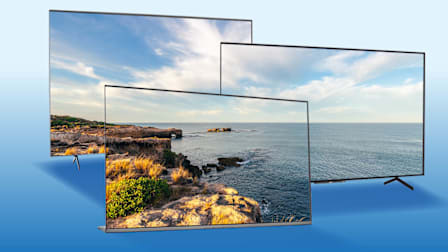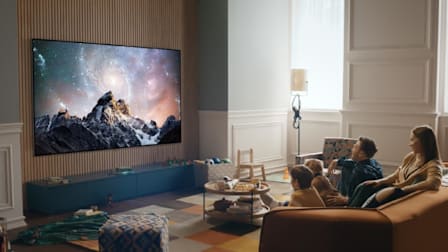Remember Panasonic TVs? They're Back—This Time With OLED and Mini LED Sets
Panasonic, once a plasma TV powerhouse, returns to the U.S. with a limited line of sets you can buy at Amazon and Costco
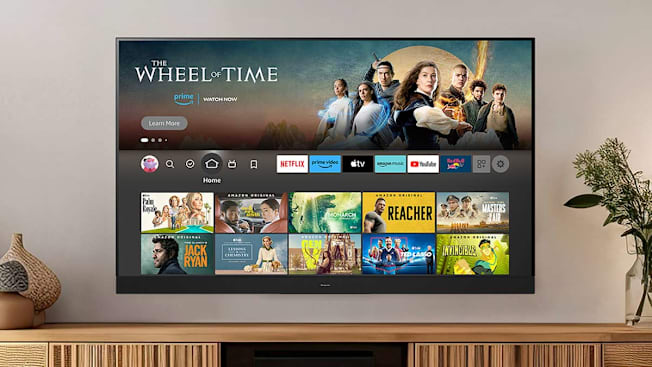
After an eight-year absence, Panasonic—a company whose TVs once topped CR’s TV ratings—is once again selling a line of TVs here in the U.S. Its first new sets include two OLED TV series, plus a line of Mini LED sets. All the TVs are available for purchase starting today at a few retailers, including Amazon and Costco.
All the new Panasonic sets use the Amazon Fire TV smart platform.
Many of us have fond memories of the company’s plasma TVs, which topped CR’s ratings for several years. (I owned a 55-inch VT-series Panasonic plasma TV for quite a while.) The company stopped selling TVs in the U.S. in 2016 after plasma TVs sales were eclipsed by larger, brighter, and more efficient LCD sets. Panasonic—along with LG and Samsung—ended plasma TV production in 2014, and it exited the U.S. TV market completely two years later.
Panasonic OLED TVs
Panasonic is offering two 4K OLED series. The flagship set is the Z95A, which right now is available only in a 65-inch screen size, with a suggested retail price of $3,200.
Befitting its flagship status, it’s loaded with features, including micro lens array (MLA) technology, which so far we’ve seen only in LG’s flagship OLED TVs. Without getting too technical, it involves using billions of tiny convex lenses that let the TV direct more light out toward the viewer, enabling a brighter picture while also improving energy efficiency. When I asked, the company declined to say which OLED panel technology it’s using, WOLED (like LG, for instance) or QD OLED (like Samsung). But a similarly named model sold in Europe uses an LG WOLED panel.
The Z95A set also features a more advanced "360 Soundscape Pro" sound system that’s not found in other models. It uses a multiple speaker arrays—with front, side, and upfiring drivers placed around the set’s cabinet—to create an immersive audio experience. A feature called "sound focus" allows sound to be directed to specific parts of the room, the company claims.
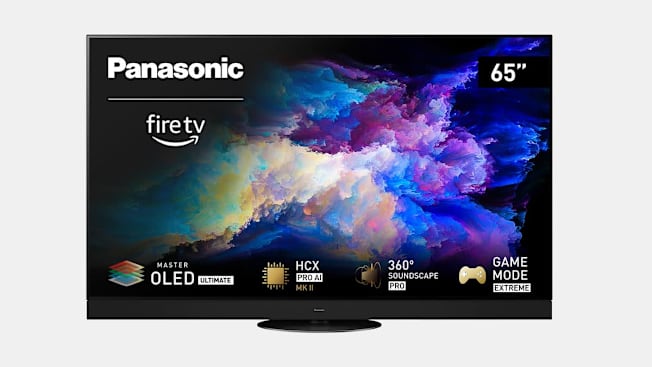
Photo: Panasonic Photo: Panasonic
The set has robust gaming features, including a variable refresh rate (VRR) up to 144 Hz, an auto low-latency mode (ALLM), and support for high frame rates. An on-screen overlay, called Game Control Board, provides quick access to all your game settings without you having to exit a game.
Lower-priced OLED TVs can be found in the Z85A-series, with sets offered in both 55- ($1,600) and 65-inch ($1,800) screen sizes. These sets have many of the same features, but not all of them. The TVs lack the MLA feature found in the flagship model. Also, they come with a less powerful sound system with fewer speakers, and Dolby Atmos audio rather than the Soundscape 360 Pro sound.
The Z85A sets have most of the same gaming features as the flagship TVs, but the refresh rate is limited to 120 Hz.
Panasonic LCD/LED TVs
The widest range of screen sizes and prices are found in Panasonic’s W95A-series models, which are available in 55- ($1,300), 65- ($1,800), 75- ($2,300), and 85-inch ($3,000) screen sizes.
All of the sets use quantum dots to produce a wider range of colors, and Mini LED backlights, one of the newest features we’re seeing on better LCD-based TVs. Because the LEDs are much smaller, more of them can be packed together and divided into a large number of small dimmable zones. That gives sets that use Mini LED backlights the potential to deliver improved brightness, contrast, and black levels.
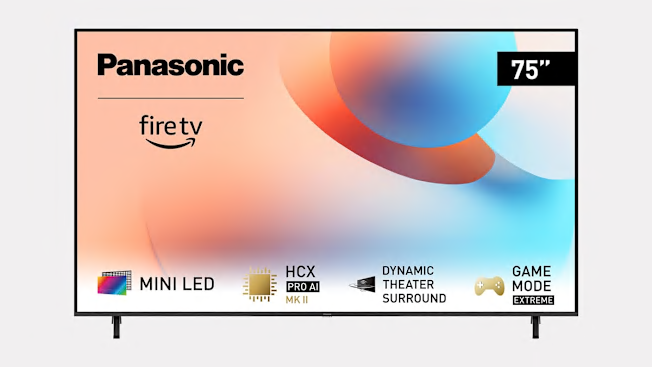
Photo: Panasonic Photo: Panasonic
All the W95A-series sets support refresh rates up to 144 Hz, and they have most of the same gaming features found on the other models. (All the TVs support AMD FreeSync, but the LCD/LED models lack Nvidia G-Sync the compatibility found in the OLED sets.)
Panasonic’s new TVs all come with a new advanced processor, called HCX Pro, and use artificial intelligence to upscale lower-resolution content to the set’s 4K panel, and to automatically adjust picture settings based on the type of content being viewed. Every model supports both Dolby Vision and HDR10+ HDR formats, along with HDR10 and HLG.
In addition, all the new sets use the Amazon Fire TV smart system with built-in Alexa, so you can launch apps, change channels, and control your smart home devices using your voice. But only the Z95A flagship OLED set also has a far-field microphone in the TV itself, so you can use your voice without the remote control.
Should You Buy a Panasonic TV?
A definitive answer will have to wait until we’re able to bring a few of these new sets into our labs for testing. Clearly there’s no shortage of OLED TVs from which to choose, with some models from LG, Samsung, and Sony now topping our current ratings. In the past we were never all that impressed with Panasonic’s LCD-based sets, but many of its plasma TVs did extremely well and were highly recommended.
Once we’re able to thoroughly test these TVs, we’ll have a better idea of how Panasonic’s new sets stack up to the competition, and whether they represent a good value based on their price and performance.





























